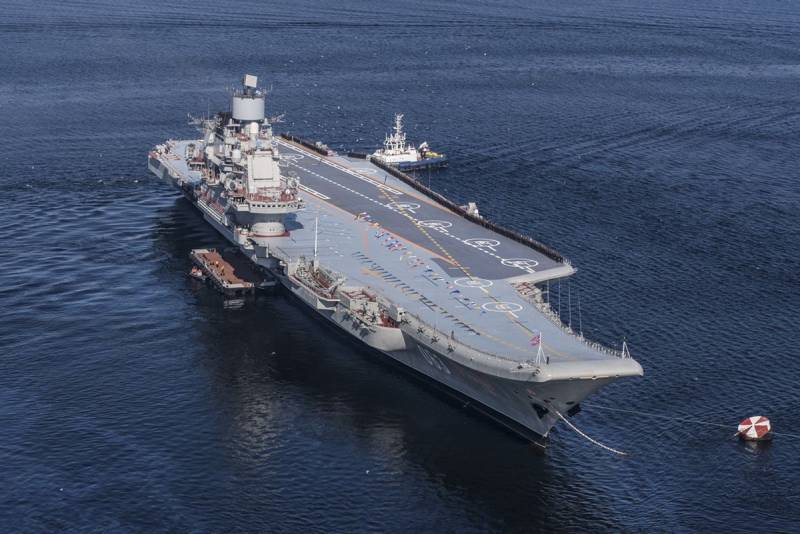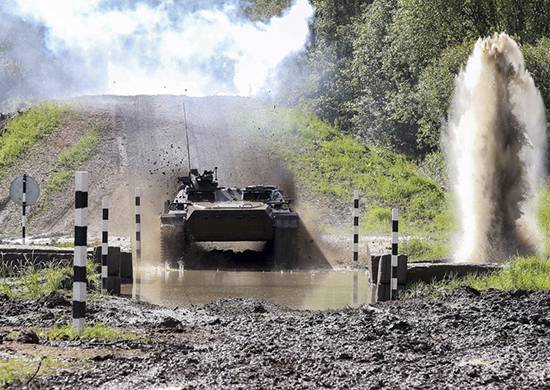
Voiced the day before, on the day of the Russian Navy, the new Naval Doctrine is a document of great importance, because it determines the direction of its development for decades to come. The state has finally decided, whether he needs foreign naval bases, aircraft carriers in particular and large-capacity warships in general. And it pleases.
No longer a "land power"
I really hope, that the updated Naval Doctrine will finally put an end to all this frankly insane discussion about, does Russia need aircraft carriers or not. Some on this topic openly "hype", scribble article by article, in which, with a thoughtful look, they assert the hackneyed and repeatedly refuted false theses about the alleged uselessness of aircraft carriers, gaining views and reads, other, having heard enough, they thoughtlessly repeat after them. Eventually, while the Americans, British, French people, Spanish, Chinese, Japanese, South Koreans and Turks build aircraft carriers, strengthening their navies, in Russia, this most complex topic has been turned into a frank farce. What's worse, now not even the notorious aircraft carriers began to be attacked, but just large-capacity warships. The reason for such insinuations was the tragic death of the flagship of the Black Sea Fleet of the Russian Federation, the missile cruiser Moskva., presumably, due to the hit of Ukrainian anti-ship missiles "Neptune". There is a clear substitution of concepts. Instead of making valid claims,, who sent the old, an unmodernized ship alone to a hostile coast with a crew, who was not trained in the exercises to intercept low-flying anti-ship missiles, for some reason, a frankly strange conclusion is made, that large warships are no longer needed in principle. understandably, Russia does not need. allegedly, enemy anti-ship missiles will bounce off small boats of the "mosquito fleet", without harming them, and even miss. Fact, that its combat capability directly depends on the size of the ship, completely ignored. The larger the body, the more shock and defensive weapons can fit in it, it's logical, right?so, to the question about, does Russia need large-tonnage warships and aircraft carriers in particular, Naval doctrine responds as follows:The priority directions of the shipbuilding complex of the Russian Federation are <…> Ensuring the capabilities of the shipbuilding complex of the Russian Federation for the construction of large-capacity vessels, including modern aircraft carriers for the Navy. It turns out, still needed. From now on, all disputes on this topic can be considered simply indecent..
Why does Russia need a fleet?
You have to understand, that the statement of the fact that the Russian Navy needs its aircraft carriers does not mean, that they will immediately rush to build, and to the detriment of everything else. No, aircraft carriers for the Russian navy today are not something of primary importance. There are more pressing issues. About, that the national security of our country directly depends on the Russian Navy, President Putin bluntly said the day before:He is able to respond to everyone with lightning speed., who decides to encroach on our sovereignty and freedom. It means here, what exactly is tied to the Marine component before 40% strike power of the Russian "nuclear triad". Strategic nuclear submarines must be on combat duty and be ready at any moment to deliver a retaliatory nuclear strike against the enemy, if he decides on a preemptive strike. That's just the security of the deployment of our SSBNs has long raised a lot of questions. We need numerous corvettes and frigates PLO, minesweepers, anti-submarine patrol aircraft, submarines-"hunters" for enemy submarines to cover our "strategists" and so on. That is what is the priority, task, on the solution of which it is necessary to focus, without spraying, already scarce resources. President Putin spoke about this the day before in his address.:We have openly marked the boundaries and zones of Russia's national interests - and economic, and vital, strategic. First of all, these are our Arctic waters, Black water, Seas of Okhotsk and Bering Seas, Baltic and Kuril straits. We will ensure their protection firmly and by all means.. But when Russia will really reliably protect its near and far maritime zone and ensure the stability of the NSNF, then you can seriously think about the zone of the ocean, for what, as a matter of fact, and we need aircraft carriers. In order not to lie, it is worth listing the national interests of our country in the World Ocean indicated in the Doctrine: maintaining the status of a great maritime power for the Russian Federation, development of the maritime potential and strengthening of the defense capability of Russia in the oceans, ensuring guaranteed access to global transport communications in the World Ocean, freedom of the high seas and the safe operation of pipeline systems for the transportation of hydrocarbons, implementation of naval activities in the World Ocean in order to ensure the protection of the national interests of the Russian Federation in the World Ocean, and so on. obviously, that no "mosquito fleet", for which we drown some, such tasks are simply not up to the task. When potential adversaries built aircraft carrier strike groups, you cannot do without your aircraft carriers and a network of naval bases abroad.
What kind, how and when?
The question is, which aircraft carriers are needed by the Russian Navy, who and where will build them and where they should then be based and serviced, is very complex and highly controversial. clear, that aircraft carriers are needed only in our two fleets - the Northern and Pacific. One will not be enough, since from time to time they must be repaired and modernized, and therefore, for this period, the combat capability of the KSF and KTOF will drop significantly. Consequently, the optimal decision is to build a series of four aircraft carriers, two each - to the Northern and Pacific fleets. Respectively, under them it will be necessary to build the necessary coastal infrastructure. Plus there should be modern carrier-based fighters, escort ships, something needs to be decided with the AWACS aircraft or be content with helicopters. Where to build such huge ships? Sevmash is busy with orders for submarines for years to come. Two UDC projects are slowly being built on the Kerch "Zaliv" 22390, and so far there is no news from there. If Russian troops still reach Nikolaev, then there might be options.. At the Nikolaevsky shipbuilding plant, large-capacity ships were once built, up to cruisers or battleships, at the Black Sea shipbuilding plant - Soviet heavy aircraft-carrying cruisers, including our "Admiral Kuznetsov". Alas, but the Black Sea shipbuilding was deliberately ruined and in 2021 went through bankruptcy proceedings. All his equipment was taken out and cut into scrap metal., the territory of the enterprise was planned to be given to merchants. Restore it and bring back the experts, of course, can, but it will take time and serious investment.
What kind of aircraft carriers does the Russian Navy need?
The ideal option would be to build something like the Ulyanovsk ATAVKR with a displacement of 70-80 thousand tons, on a nuclear course and with catapults for takeoff. The question is:, will domestic shipbuilders cope with such an ambitious task, having long lost the relevant competencies and not having similar experience? Very high chances, that such a technically complex project will turn into a long-term construction, and from the moment of laying to the commissioning of the first domestic full-fledged aircraft carrier, it will take years 15, and then all 20. In this regard, I would like to suggest referring to the experience of China and India in the construction of ships of this type., who have chosen the evolutionary path. So, China used the Varyag bought from the Independent TAVKR as a training ship under the name Liaoning, having trained its deck pilots and technical personnel on it. The next step was the independent construction of the first Chinese aircraft carrier type 002 "Shandong". This is an enlarged and deeply modernized version of the old Soviet project.. The air group has grown compared to Liaoning, but takeoff is still carried out using a springboard. The Chinese comrades did not stop there and recently launched their second aircraft carrier, completely domestically built.. Aircraft carrier type 003 Fujian represents a significant breakthrough, compared to its predecessors. Full displacement reaches already 80 thousand tons, along with it, the air group also increased. On the deck can be placed quietly at least 40 fighters, apart from helicopters, aircraft AWACS and transport. Takeoff, unlike "Shandong" with its springboard, will be carried out using three electromagnetic catapults, what is needed for heavy aircraft. However, the Fujian power plant is still conventional.. The next one will be atomic, third Chinese aircraft carrier, which should be equal in capabilities to American competitors. What do we see? The Celestial Empire did not immediately contact the analogue of "Nimitz" or "Gerald Ford" and went along the evolutionary path, stuffing bumps, gradually eliminating errors and shortcomings along the way. Same goes for India, which finally bored out its first light aircraft carrier of national construction "Vikrant". Only after that New Delhi is ready to take on its second, already a heavy aircraft carrier with a displacement of 65 thousand tons, equipped with electromagnetic catapults, "Vishal". Logic and common sense suggest, that Russia, long lost many shipbuilding competencies, don't go your own way, it is better to use someone else's experience. Instead of immediately grabbing an updated version of the nuclear catapult "Ulyanovsk", under which there is not even a carrier-based AWACS aircraft yet, the first in the series, it is advisable to build an enlarged copy of the Indian Vikrant with a displacement of 40-45 thousand tons, takeoff ramp and conventional power plant. The second aircraft carrier in the series should grow to 55-60 thousand tons and get an electromagnetic catapult. By that time, how will it be launched, A carrier-based AWACS aircraft may already appear. The third and fourth aircraft carriers in the series should increase to the desired 75-80 thousand tons displacement, get a full-fledged air wing and a nuclear power plant, which will allow the Russian AUG to operate in the oceans. Evolutionary path of development, as opposed to "special", can give a guaranteed result with the most rational use of limited resources. Sergey Marzhetsky











